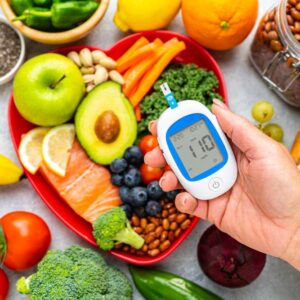
Are Bagels the New Cigarettes?
- New research has shocking results about the dangers of carbs
- The one time in life it’s less dangerous to be a smoker
- One way to make better carb decisions for your health.
Dear Reader,
Many people experience the devastating effects of lung cancer during their lifetimes — either by firsthand experience or by it touching the lives of loved ones.
In fact, lung cancer is so common it’s the second most diagnosed type of cancer in America for both women and men. And it’s also the leading cause of cancer deaths, with 150,000 U.S. deaths expected in 2016.1
Often, we hear of people afflicted with lung cancer who have never smoked cigarettes a day in their lives.
Last week, researchers at the MD Anderson Cancer Center at the University of Texas released a study that may shed some scientific light on these mysterious smoke-free lung cancer cases.
And what is shocking — it has everything to do with bagels and birthday cake, not cigarettes.
Today, I will share with you one easy way to help you combat these cancer causers.
But first, let’s sort out what the study found.
![]() The Glycemic Index : High Scores, High Risk
The Glycemic Index : High Scores, High Risk
The research, published in Cancer Epidemiology, Biomarkers & Prevention, a journal of the American Association for Cancer Research, shows that if you eat a diet of high-glycemic index (GI) foods, you are at a greater risk of developing lung cancer. And not just by a fraction — some folks experienced a 49 percent increased chance for lung cancer.1
The glycemic index indicates the quality of carbohydrates in a food and how quickly your blood sugar levels rise after eating it. The glycemic load measures the carbohydrate quantity.
Previous cancer research has investigated the link between glycemic index and glycemic load and the risk of numerous cancers.
This study furthered the research.
Lead author of the study and postdoctoral fellow at MD Anderson Stephanie Melkonian reports:
“Diets high in glycemic index result in higher levels of blood glucose and insulin, which promote perturbations in the insulin-like growth factors (IGFs).”
Let’s break this down further…
Insulin-like growth factors are different types of hormones that mostly stimulate growth but also have some ability to lower blood glucose levels. 2
The high levels of glucose found in in high-glycemic foods may cause IGF distress and could be what is leading to cancer cell growth.
Foods high on the glycemic index include those made with white flour and refined sugar, such as white bread as well as things like rice and breakfast cereals.
Since these foods are regular staples in many American homes, this may explain how some nonsmokers are now lung cancer cases.
The study examined the diet of approximately 1,950 patients with recent lung cancer diagnoses as well as 2,413 healthy people. All participants self-reported their diets, and then researchers evaluated their glycemic index accordingly.
The researchers found the end result. Xifeng Wu, senior author of the study and an epidemiology professor at MD Anderson, explains, “We observed a 49 percent increased risk of lung cancer among subjects with the highest daily GI compared to those with the lowest daily GI.”
What’s interesting is the glycemic load seemingly has no significant correlation with the risk of lung cancer. According to Wu, “This suggests that it is the average quality, instead of quantity, of carbohydrates consumed that may modulate lung cancer risk.”
Among those who smoke, lung cancer risk was raised by only 31 percent when consuming a high-glycemic index diet. This means the effects of the glycemic index are more apparent in the absence of a major risk factor like smoking.
“The results from this study suggest that, besides maintaining healthy lifestyles, such as avoiding tobacco, limiting alcohol consumption, and being physically active, reducing the consumption of foods and beverages with high glycemic index may serve as a means to lower the risk of lung cancer,” said Wu.
So there you have it, one easy way to help prevent cancer — avoid consuming foods high on the glycemic index.
Per the University of Sydney, carbs with a glycemic index of 55 or lower are more slowly digested, absorbed, and metabolized.
Foods like bagels and white bread have indexes between 70–95.
While it may be best to try to cut carbs out as much as possible, the University of Sydney also has a tool that can help you make more informed glycemic index dietary decisions.
You can access their online search engine, which provides glycemic index scores for many foods, here.
If you have any low-glycemic index diet tips, send them my way! nmoore@lfb.org
Live well,

Natalie Moore
Managing editor, Living Well Daily
Sources
[1] Dietary glycemic index linked to lung cancer risk in select populations
[2] Insulin-like growth factor (IGF)
[3] Is Green Squash Low Glycemic?
Written By Natalie Moore
Natalie Moore is a dedicated health researcher with a passion for finding healthy, natural, and science-based solutions. After a decade of direct healthcare experience in western and natural medicine, she was involved in public health research before joining Living Well Daily.
View More Free Articles
Stop Obsessing Over Diet Trends
Can we stop with the endless diet debates already? Every other week there’s a new headline shouting about which diet is best for weight loss, heart health, or diabetes. Paleo, keto, low-carb, high-protein… it’s exhausting. And now, a new meta-analysis is out comparing the Mediterranean diet, the DASH diet, and something called AHEI (that’s “Alternative...
A New Reason to Ditch Processed Junk
If you’ve ever walked the inside aisles of your local grocery store and thought, “This is all just junk,” your instincts were spot on. A new study published in the journal Thorax just added another red flag to the list of dangers linked to ultra-processed food—a 41 percent higher risk of lung cancer. That’s right....
When Being Winded on Stairs Is Serious (And When It Isn’t)
I had an athlete visit me recently because he experienced shortness of breath while climbing stairs. He is in great shape, so he was worried about what it might mean. “Doc,” he said, “I run five miles three times a week. Why am I huffing and puffing after two flights of stairs?” His concern is...
Study EXPOSES Hidden Danger Lurking in Your Car
We think of our homes and cars as safe havens. But according to a startling new study, they may be flooding your lungs with microscopic plastic particles—every single day. Researchers in France recently found that adults inhale an average of 68,000 microplastic particles daily from indoor air alone. To put that in perspective, that’s about...
Mailbag: Is Modern Food Making You Snore?
“What can cause snoring, and is there a way to correct this issue?” —Seeking Silence Hi Seeking, Snoring happens when the soft tissues in your throat relax and vibrate as air passes through during sleep. While several factors can cause snoring—from sleep position to nasal congestion—I want to share one trigger that might surprise you....
Simple Food Swap SLASHES Dementia Risk 28%
Let’s be honest… who would jump at the chance to cut their dementia risk by 28 percent. And no, you don’t need to run marathons, survive on broccoli, or learn to play the zither (whatever that is) to make it happen. All it takes is one easy swap—something that’s probably already in your refrigerator. Researchers...
This SMART Floss Exposes Hidden Health Danger
Scientists have created dental floss that doesn’t just clean between your teeth—it also tracks your stress while you’re flossing. Now, I know what you’re thinking… “Great—now even flossing is going to stress me out by telling me how stressed I am.” But this fascinating new tool from Tufts University could be a game-changer for understanding...
Is This "Safe" Sweetener Damaging Your Brain?
The headlines are alarming… “Popular Sugar Substitute Linked to Brain Cell Damage” and “Erythritol Could Damage Critical Brain Barrier” are just two of the dozens I’ve spotted recently. But before you toss every sugar-free product in your pantry, let’s take a closer look at what this study actually shows—and what it doesn’t. The latest research...
This Summer Threat Could SPIKE Your Blood Sugar
Picture this… It’s another scorching hot summer day. You crank up the air conditioning while watching the weather forecast, which predicts yet another “record-breaking” heat wave. It’s starting to feel like just another miserably uncomfortable summer. But what you might not realize is that—if you have diabetes—those rising temps could do far more damage to...
Move Over Yogurt—5 Foods That Pack MORE Probiotics
Let’s talk about your gut. The microbiome is the collection of trillions of bacteria and other tiny organisms that live in and on your body—especially in your gut—and help keep you healthy. I’ve written often about how vital it is to maintain a healthy microbiome. And you might have dutifully added yogurt to your shopping...









